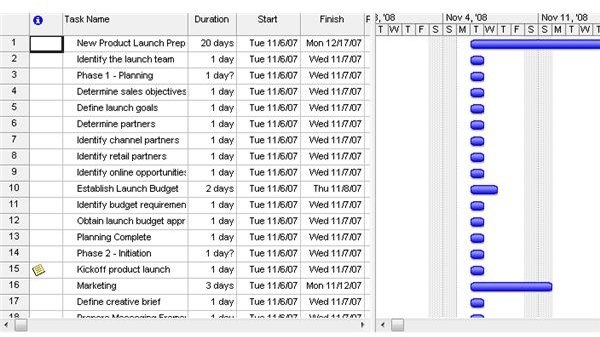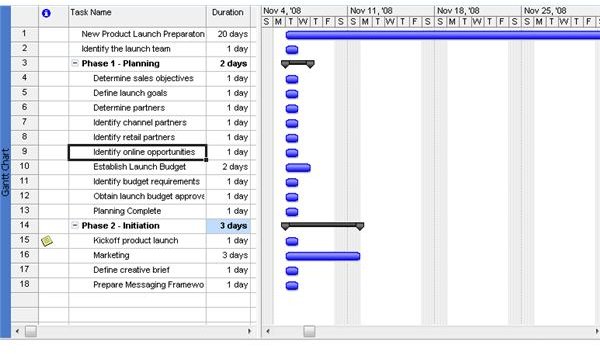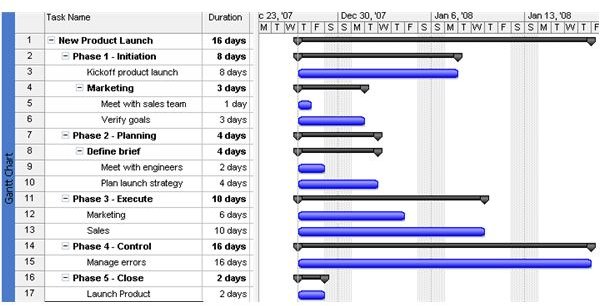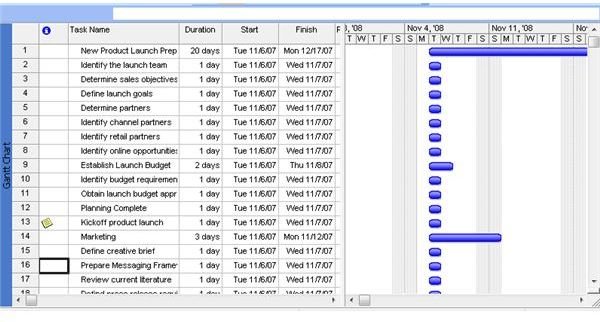Project 2007: Outlining the Project Plan
Two Planning Methods
If you have a general idea of project organization but have not yet developed detail level tasks, you will begin your planning using the top-down method. This means that you have a good idea of your high-level organization, which will turn into summary tasks in Office Project 2007. Later you will add the details, project tasks, and subtasks.
For a project plan that has all of the detail tasks but has not yet been organized into a high-level plan, you will use the bottom-up method. With this planning method, you start with a highly detailed task list, or subtasks, and create logical groups to represent summary tasks.
When your tasks have been entered and organized, you can begin setting up those tasks into a workable outline. You do this by demoting (indenting) tasks that you want to define as subtasks and, if necessary, promoting (outdenting) tasks that you want to define as summary tasks. (The Formatting toolbar offers the Indent and Outdent buttons to make this easy to do.)
At this stage you will implement your preferred approach to organizing your project plan into your chosen task groups (top-down or bottom-up) and then begin to indent and outdent your chosen tasks to organize your project tasks.Although these planning methods are not specific to Office Project 2007, understanding key project management theoretical concepts such as these will help you as you take this exam.
Using the Bottom Up Method
We will start by creating an outline using the bottom-up method. The figure (at left) shows a recently started project. You can see all of the detail tasks. You already know how to create a new project and add tasks, so getting to this point is easy. As the project is further refined, one of the first things that needs to be done is to insert a few tasks that will act as summary tasks. You can do this by using the Insert key.
As you know, to insert a task using the Insert key, select the cell below where the task should go and press Insert on the keyboard. See the following figure and compare it to the first figure to see what has been added.
Phases Add Definition

Now that the summary tasks have been added, you can begin to create the outline structure. Notice that the durations of the summary tasks have not been updated. This is because a summary task’s duration, start date, finish date, and a variety of other calculated fields are derived from the data contained in the subtasks.
This will be changed when you indent the subtasks. Our figure (at right) shows how the indent process changes the information in the Entry table.
Create Subtasks

Look at each of the summary tasks in the figure (at left). Note how the summary tasks’ durations are equal to the length of the longest subtask.
After task relationships are defined, the summary task duration will automatically update to represent the total duration of all subtasks.
Multiple Summary Sections
Each project can have multiple outline levels creating several summary tasks. As shown in figure below, here the project is defined in phases which are titled Define Sources of Customer Feedback, Determine Data Analysis Methods, Design Custom Issue Response Process, and others.
Phases Add Definition (Again)

Notice how the summary tasks have a “-” sign to the left. This means they are high-level tasks with associated subtasks.
Often a subtask is also a summary task.Not only do these summary tasks represent cumulative subtask data, but each contains its own outline indicator allowing the subtasks to be collapsed (hidden) or expanded (displayed), using + and - signs on the screen.
Excerpted from…
With permission from Microsoft Press, this article content was excerpted from the book, Managing Projects with Microsoft Office Project 2007 <em>(Self-Paced Training Kit for Exam 70-632)</em>.
This post is part of the series: Project 2007: Outlining the Project Plan
Understanding two methods of outlining your project plan: bottom up and top down.
